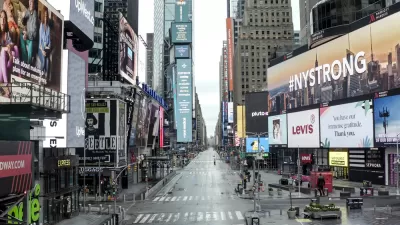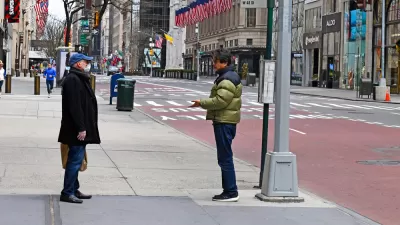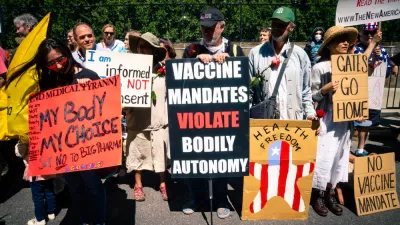Modular systems and flexible use of shared spaces are priorities as urban designers begin to consider how design requirements will change in the future.

Efforts to slow the spread of the coronavirus are prompting creative, life-saving design interventions. The past few months have seen the repurposing of buildings and even shipping containers as medical facilities and the retrofitting of hospitals to facilitate distancing. In the coming months and years, schools and offices will be redesigned to meet social distance protocols.
According to Starr Herr-Cardillo, "many of the pandemic’s most enduring influences over the built environment won’t be felt during the pandemic itself. They will evolve over the next several months and years." Architects, not typically considered to be first responders, are spearheading design interventions that will have a lasting impact on the built environment.
In Philadelphia, the Community Design Collaborative’s Design SWAT team, a design collaborative offering pro-bono design services to community organizations redesigned the local Sunday Breakfast Rescue Mission to include handwashing stations, repurposing the dining hall as a "functional multi-purpose room."
Architects predict that modular systems and flexible use of spaces will be key as retrofits and redesigns are prompted as a coronavirus response. Research is underway and it is possible that "careful evaluation across institutions might help identify those small, innocuous-but-critical design factors that made a difference."
FULL STORY: How designers are remaking spaces for our new socially distanced lives

Alabama: Trump Terminates Settlements for Black Communities Harmed By Raw Sewage
Trump deemed the landmark civil rights agreement “illegal DEI and environmental justice policy.”

Planetizen Federal Action Tracker
A weekly monitor of how Trump’s orders and actions are impacting planners and planning in America.

Why Should We Subsidize Public Transportation?
Many public transit agencies face financial stress due to rising costs, declining fare revenue, and declining subsidies. Transit advocates must provide a strong business case for increasing public transit funding.

Understanding Road Diets
An explainer from Momentum highlights the advantages of reducing vehicle lanes in favor of more bike, transit, and pedestrian infrastructure.

New California Law Regulates Warehouse Pollution
A new law tightens building and emissions regulations for large distribution warehouses to mitigate air pollution and traffic in surrounding communities.

Phoenix Announces Opening Date for Light Rail Extension
The South Central extension will connect South Phoenix to downtown and other major hubs starting on June 7.
Urban Design for Planners 1: Software Tools
This six-course series explores essential urban design concepts using open source software and equips planners with the tools they need to participate fully in the urban design process.
Planning for Universal Design
Learn the tools for implementing Universal Design in planning regulations.
Caltrans
Smith Gee Studio
Institute for Housing and Urban Development Studies (IHS)
City of Grandview
Harvard GSD Executive Education
Toledo-Lucas County Plan Commissions
Salt Lake City
NYU Wagner Graduate School of Public Service





























